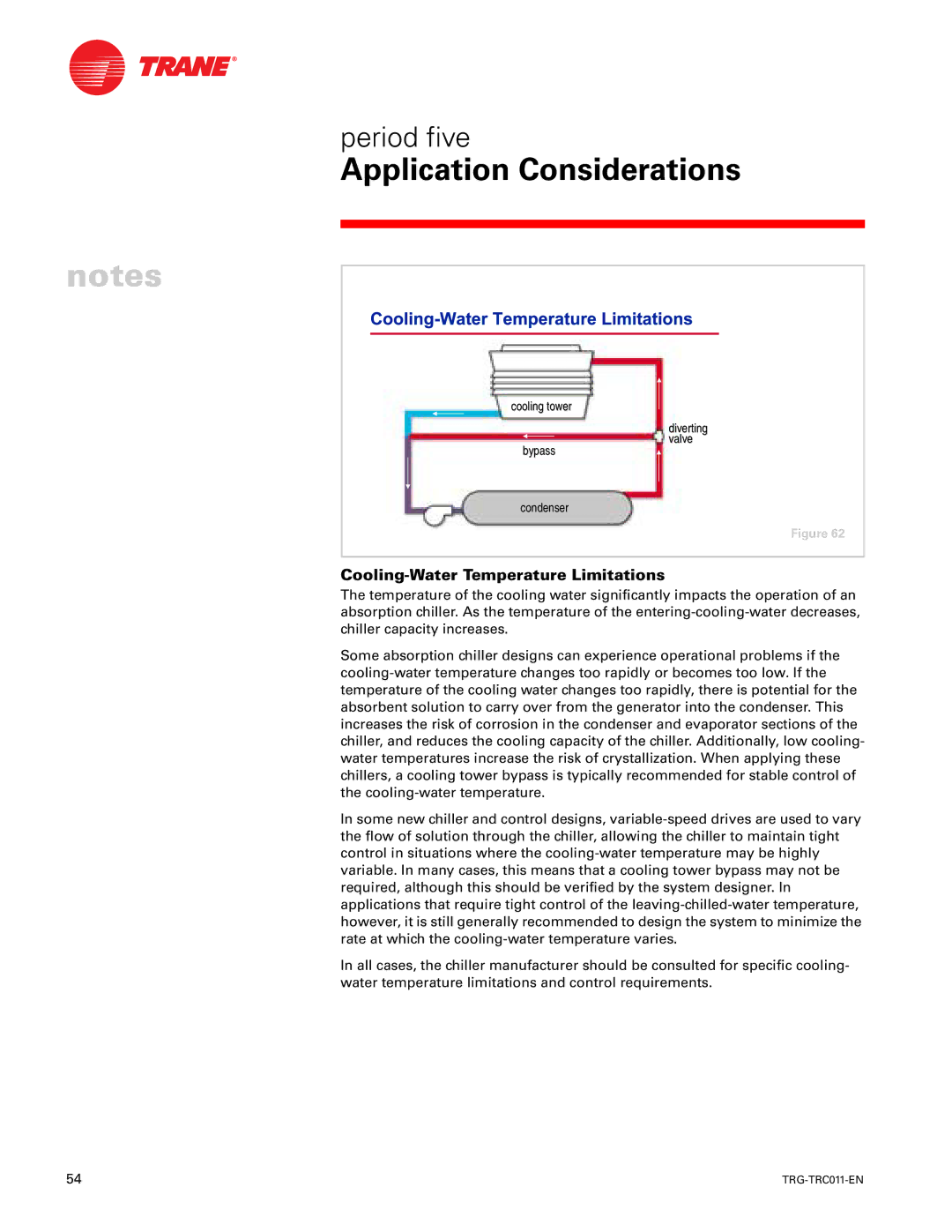
period five
Application Considerations
notes
cooling tower
diverting
 valve bypass
valve bypass
condenser
Figure 62
Cooling-Water Temperature Limitations
The temperature of the cooling water significantly impacts the operation of an absorption chiller. As the temperature of the entering-cooling-water decreases, chiller capacity increases.
Some absorption chiller designs can experience operational problems if the cooling-water temperature changes too rapidly or becomes too low. If the temperature of the cooling water changes too rapidly, there is potential for the absorbent solution to carry over from the generator into the condenser. This increases the risk of corrosion in the condenser and evaporator sections of the chiller, and reduces the cooling capacity of the chiller. Additionally, low cooling- water temperatures increase the risk of crystallization. When applying these chillers, a cooling tower bypass is typically recommended for stable control of the cooling-water temperature.
In some new chiller and control designs, variable-speed drives are used to vary the flow of solution through the chiller, allowing the chiller to maintain tight control in situations where the cooling-water temperature may be highly variable. In many cases, this means that a cooling tower bypass may not be required, although this should be verified by the system designer. In applications that require tight control of the leaving-chilled-water temperature, however, it is still generally recommended to design the system to minimize the rate at which the cooling-water temperature varies.
In all cases, the chiller manufacturer should be consulted for specific cooling- water temperature limitations and control requirements.

![]() valve bypass
valve bypass![]()
